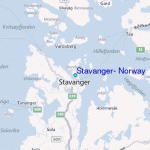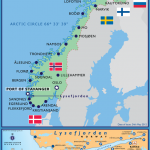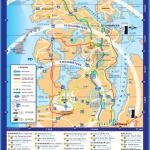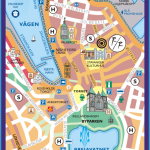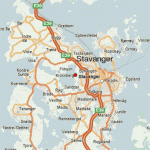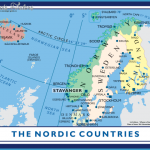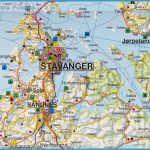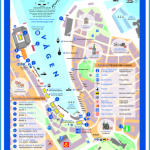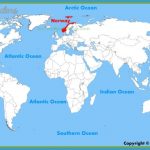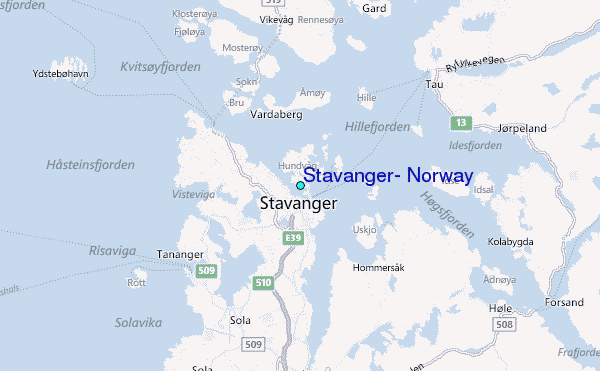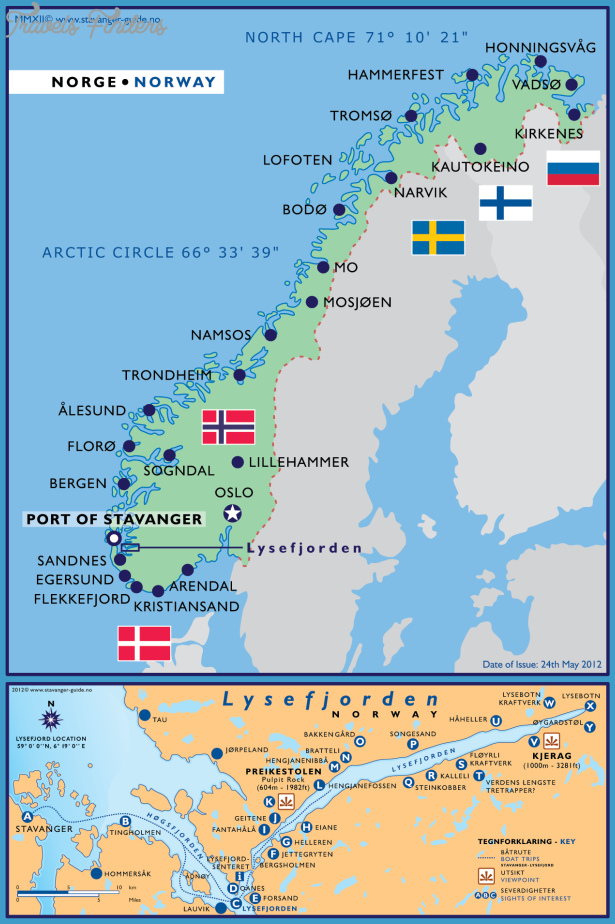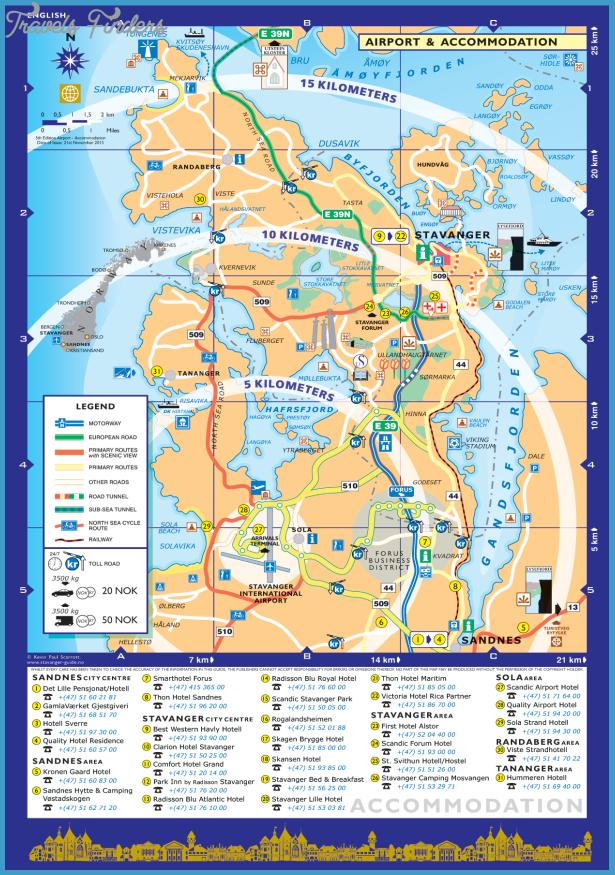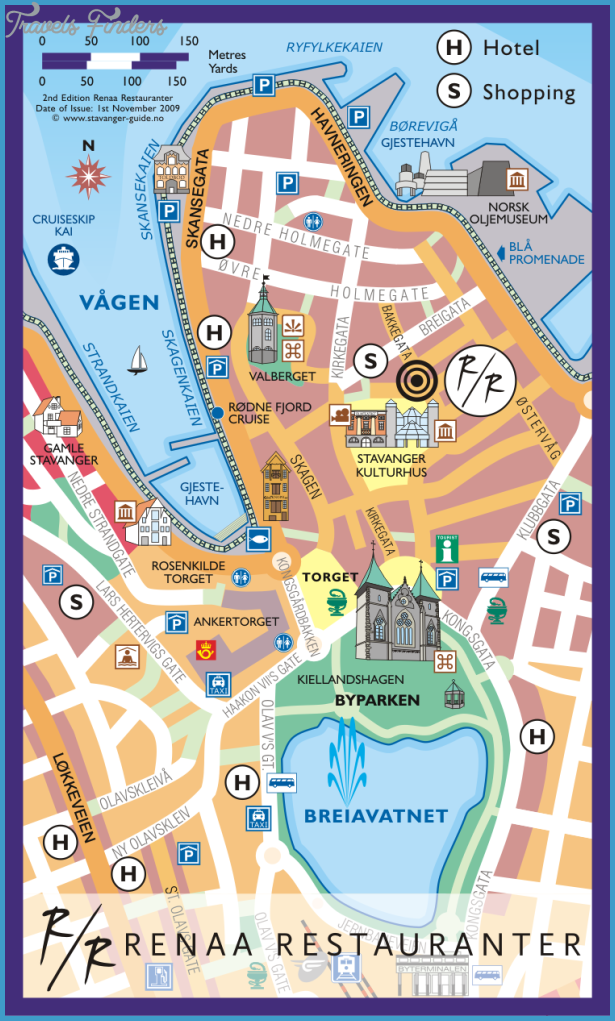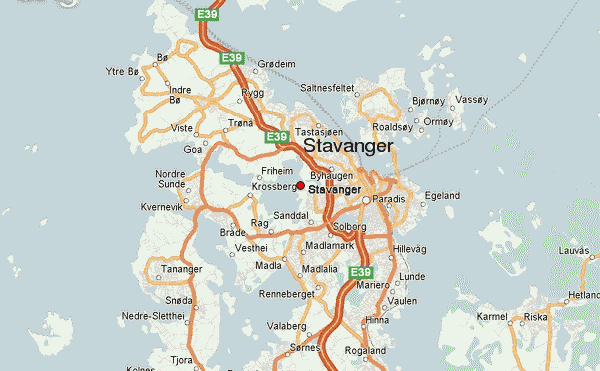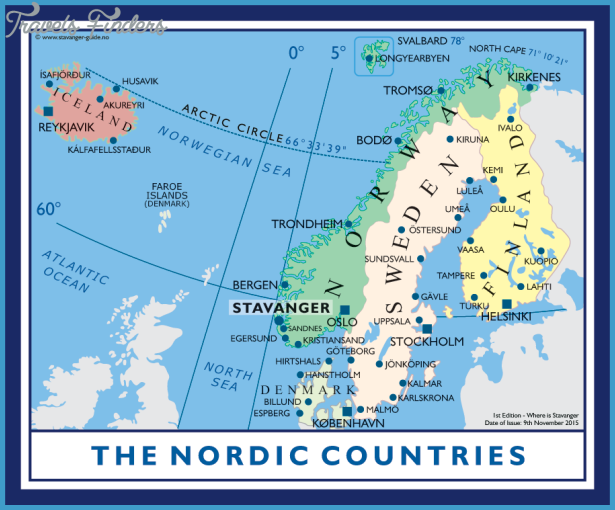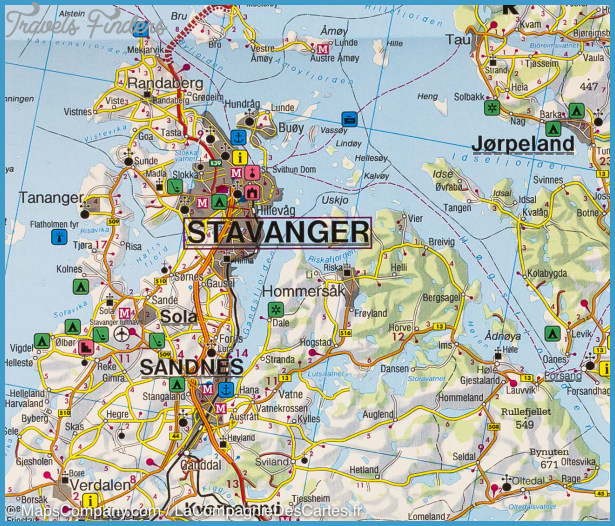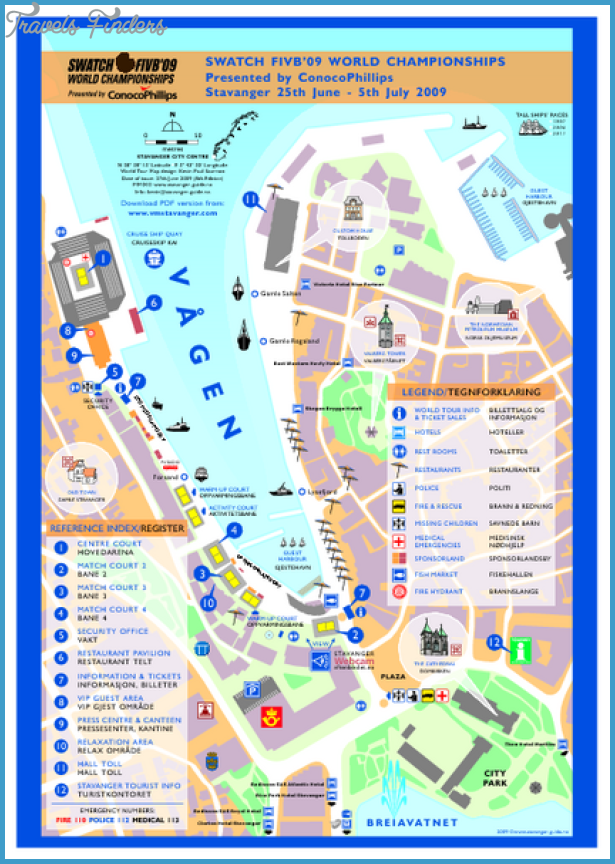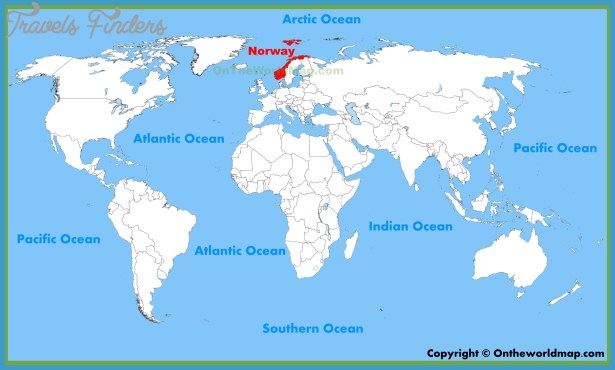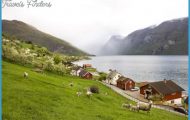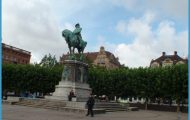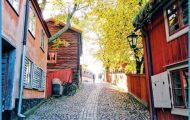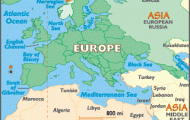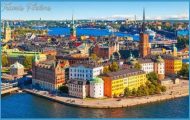County: Rogaland fylke.
Altitude: sea level. Population: 89,000.
Postal code: N-4000. Telephone code: 0 45.
Turistpaviljongen, at railway station; tel. 2 84 37.
HOTELS. S4S Royal Atlantic, 275 KNA-Hotellet, 210 Esso Motor Hotel, 270 SB: Victoria, 150 StSvithun, 100 b..Alstor, 140 SB; Bergeland Hospits, 36 b,; Rogalandsheimen, 20 Oglaends Hospits, 20b. YOUTH HOSTEL. CAMP SITE.
Event. Angling Festival (August).
SPORTS and RECREATION. Angling trips.
Stavanger, county town of Rogaland, lies on the Byfjord or Bokna-fjord, an arm of the Stavangerfjord, near the S end of the Norwegian W coast. It is the commercial hub ofthe surrounding area, and has an excellent harbour sheltered by offshore islands. Major elements in the town’s economy are an oil refinery, fish-canning factories and, most importantly, its shipyards (construction of oil-rigs). Some 320 km (200 miles) SW of Stavanger are the Norwegian offshore oilfields Tor, Ekofisk and Eldfisk.
HISTORY. Stavanger is one of the oldest towns in Norway. From the 12th to the 17th c. it was the see of a bishop, but lost this status to Kristiansand in 1682. Toward the end of the 18th c. the town had its own merchant shipping fleet. A great economic upswing began in the second half of the 19th c. with the growth of the herring and sprat fisheries and the fish-canning industry. In recent years, Stavanger has gained increased importance with the development of the North Sea oil industry.
SIGHTS. In the middle of the town, at the N end of Kongsgate, stands the Cathedral, a three-aisled Romanesque pillared basilica built at the end ofthe 11 thc. by Bishop Reinald, also known as Reginald of Winchester (d. 1135). It is the largest cathedral in Norway (after Trondheim). The choir was rebuilt in Gothic style after a fire in 1 272, and the entire church was restored in 1 867-72. It has a richly carved pulpit (1658) and a stone font of the Gothic period. S of the Cathedral, on the N shore of the Breivatn, is the Kongsgard, formerly the Bishop’s Palace and now a grammar school (KongsgSrd Skole), with the bishop’s private chapel (Bispekapellet). To the NW, extending to the inlet of Vagen, which contains the harbour, is the Market Square (Torget), the scene of lively activity on weekdays, with a bronze statue (Vigrestad) of the Stavanger-born novelist and playwright Alexander Kiel-land (1849-1906). To the N of the square, between Vigen and the East
Stavanger in winter
Harbour (0stre Havn), lies the Holmen peninsula, the oldest part of the town. To the W of the busy Kirkegate, which runs N from the Cathedral, rises the Valberg Tower (ValbergtSrnet), an old watch-tower which now houses an exhibition of handicrafts (fine view). NE pf the Cathedral, in Nytorv, is St Peter’s Church (Petri Kirke). On the S side of the Breivatn we come to the railway station, and beyond this the Theatre. Farther beyond, in Musegata, is the Municipal Museum (antiquities, natural history, ethnography, ships and the sea). To the SW, in Peder Klows Gata, is the Vestland School Museum, and to the W, at No. 33 Madlaveien, the Art Gallery.
The finest view of the town, the fjord and the surrounding hills is from the Valandshaug (85 m (280 ft): reached by way of Hornklovesgate) to the S of the town (park; water-tower).
To the NW ofthe town, reached by way of Lpkkeveien, is the Bergsted Park, with a restaurant and a number of fine views.

